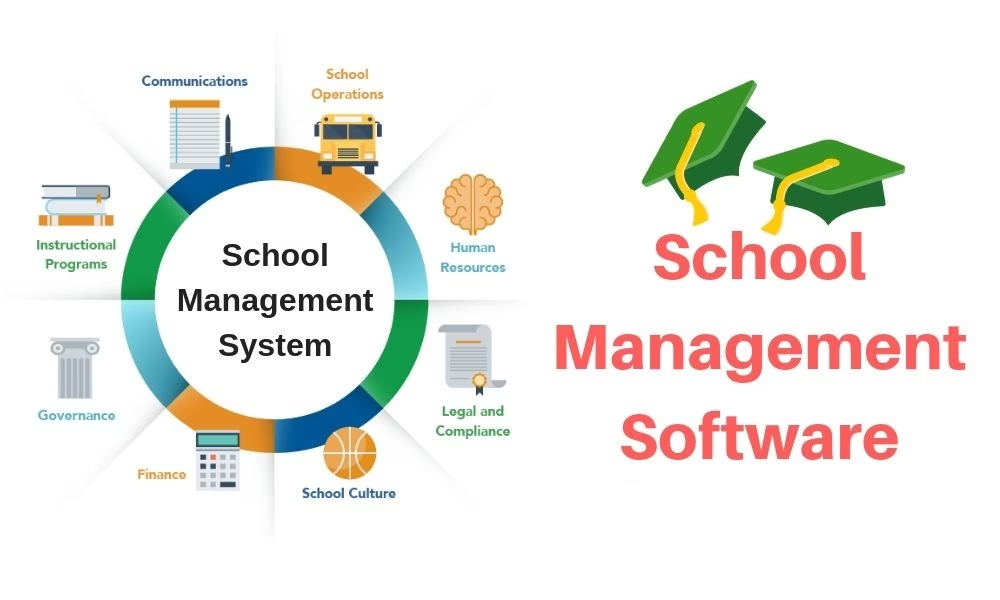Running a school is no small feat. Between managing student data, coordinating teachers, tracking attendance, and handling finances, there’s a lot that can slip through the cracks without the right tools in place. That’s where school management software steps in, a digital solution that helps schools automate day-to-day operations, improve efficiency, and deliver better learning experiences.
But with so many platforms in the market, how do you know which one fits your institution best? The answer lies in its features. The right software should simplify administrative tasks, support communication, and give real-time insights into performance.
Let’s look at the top 10 features every school management software must have to truly make a difference.
What Is School Management Software?
School management software is an integrated digital platform that helps educational institutions manage their administrative, academic, and financial activities from one central system. It connects teachers, students, parents, and administrators, making it easier to coordinate daily operations like attendance, admissions, grading, scheduling, and communication.
Instead of juggling multiple tools or spreadsheets, schools can use one unified system to handle everything, from enrollment and fee payments to progress tracking and data reporting.
For modern schools in the U.S., cloud-based solutions are now becoming the norm because they offer scalability, accessibility, and secure data storage. In fact, nearly half of schools (about 48%) already use cloud-based systems for key administrative tasks, signaling a strong shift toward digital transformation in education.
Key Features of School Management Software
A good school management software helps schools manage operations smoothly and saves time for teachers and administrators. The following are the top 10 features every school software should have:
1. Centralized Student Information System
At the core of any great school software is a centralized student information system (SIS). It stores everything, from admission details and personal records to grades, attendance, and health data.
Having this data in one place eliminates paperwork, minimizes errors, and ensures teachers and administrators can access the latest information anytime. For schools in the U.S., this also helps maintain compliance with FERPA and other data-protection standards.
A robust SIS saves time for staff and gives parents peace of mind knowing their child’s data is secure yet easily accessible when needed.
2. Automated Attendance Tracking
Manually marking attendance is outdated and inefficient. Modern school management software should automate this process using biometric, RFID, or digital check-ins.
With real-time tracking, teachers can mark attendance within seconds, and parents can receive instant notifications if their child is absent.
This automation reduces paperwork, prevents inaccuracies, and ensures better accountability—especially useful in large schools where monitoring hundreds of students daily can be challenging.
3. Online Admission and Enrollment Management
The admission season can be chaotic for administrators and parents alike. A digital system that handles applications, document verification, and enrollment online makes the entire process smoother.
Schools can customize admission forms, track applicant status, and manage waitlists—all from one dashboard. Plus, automation minimizes human error and speeds up decision-making.
When done right, the admission experience can leave a positive first impression on parents and boost your school’s credibility.
4. Fee Management and Online Payments
Managing fees manually invites delays and confusion. A modern solution should support online fee collection, automate invoice generation, and send reminders for pending payments.
Parents in the U.S. prefer the convenience of digital transactions—credit cards, ACH transfers, or even mobile wallets. Integrating these options makes payments faster and more secure.
Meanwhile, administrators can view financial reports in real time, track revenue, and ensure transparency without juggling spreadsheets.
5. Parent-Teacher Communication Portal
Transparent communication builds trust between schools and families. A parent-teacher communication portal lets teachers share progress reports, attendance updates, and announcements directly with parents.
Some advanced tools even offer chat and notification systems for quick updates on assignments, grades, or upcoming events.
This direct communication ensures parents remain engaged in their child’s education, ultimately improving student outcomes.
6. Gradebook and Report Card Automation
Teachers spend countless hours calculating grades and preparing report cards. Automated gradebooks simplify this process by pulling data from assignments, exams, and attendance records.
With a few clicks, teachers can generate digital report cards, analyze student performance trends, and share results securely.
Schools can also customize grading systems, GPA, letter grades, or percentages, based on regional or board standards.
7. Timetable and Scheduling Management
Building and managing timetables manually is both time-consuming and error-prone. A smart scheduling feature automatically creates conflict-free timetables for classes, exams, and extracurricular activities.
If a teacher is absent or a class needs rescheduling, the system adjusts and notifies everyone instantly.
Such flexibility ensures smooth academic operations, even when unexpected changes occur.
8. Learning Management System (LMS) Integration
The modern classroom extends beyond four walls. Integrating a learning management system (LMS) allows teachers to upload study materials, host online classes, assign homework, and track submissions, all in one place.
Students can learn at their own pace, and teachers can evaluate progress through quizzes or digital assessments.
9. Data Analytics and Reporting
Data-driven decisions lead to better performance. A good school management software should include powerful analytics that help administrators track attendance trends, academic results, and resource utilization.
These insights can identify gaps early, like declining attendance or underperforming students, and allow timely intervention.
From visual dashboards to downloadable reports, analytics make school management more strategic and less reactive.
10. Mobile Accessibility
Today’s users expect everything on the go, and school operations are no different. Mobile-friendly software ensures administrators, teachers, parents, and students can access key features anytime, anywhere.
Whether it’s viewing attendance, checking grades, or sending announcements, mobile access adds convenience and improves engagement.
Plus, push notifications keep everyone informed without relying on emails or phone calls.
Final Thoughts
In today’s digital-first world, schools need more than just spreadsheets and paper files. They need a centralized, intelligent system that simplifies operations and supports better education outcomes.
When evaluating your options, look for software that offers automation, integration, analytics, and accessibility. These features don’t just make daily management easier; they build a stronger, more connected school community.
Choosing the right school management software can streamline administrative and academic processes, improve efficiency, and help your institution meet the evolving needs of modern schools in the USA.






